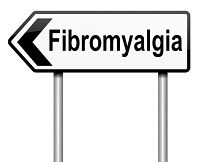Article
Hypersensitivity an Issue for Fibromyalgia Patients
Author(s):
Recent studies looking at neural response in patients with fibromyalgia have shown that people with this condition may have hypersensitivity to non-painful stimuli.

Recent studies looking at neural response in patients with fibromyalgia have shown that people with this condition may have hypersensitivity to non-painful stimuli.
A press release that accompanied publication of the results in Arthritis & Rheumatology said the study examined participants’ brain response to sensory stimulation. The findings “suggest that brain abnormalities in response to non-painful sensory stimulation may cause the increased unpleasantness that patients experience in response to daily visual, auditor and tactile stimulation.”
The American College of Rheumatology estimates there are nearly 5 million people in the US who have been diagnosed with fibromyalgia, with most of them being women. The researchers used functional magnetic resonance imaging in 35 women with fibromyalgia and 25 age-matched control group members who had not being diagnosed. The average age in the group was 47 years old, with patients receiving their diagnosis on average 7 years before the study.
Patients reported “increased unpleasantness in response to multisensory stimulation in daily life activities” and the fMRI showed “reduced activities of both the primary and secondary visual and auditory areas of the brain, and increased activation in sensory integration regions.”
Lead author Marina López-Solà, MD, from the Institute of Cognitive Science, University of Colorado Boulder, noted, “Our study provides new evidence that fibromyalgia patients display altered central processing in response to multisensory stimulation, which are linked to core fibromyalgia symptoms and may be part of the disease pathology” She added, “The finding of reduced cortical activation in the visual and auditory brain areas that were associated with patient pain and complaints may offer novel targets for neurostimulation treatments in fibromyalgia patients.”


